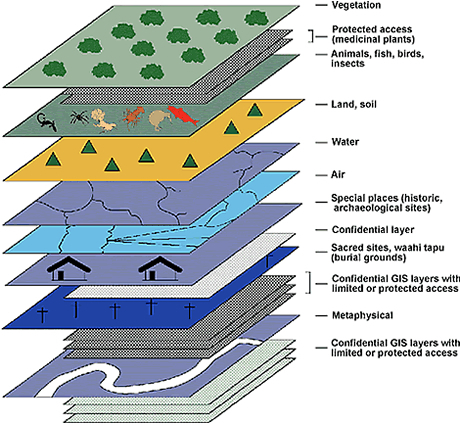What is Matauranga Maori?

Mātauranga Māori can be defined as ‘the knowledge, comprehension, or understanding of everything visible and invisible existing in the universe’, and is often used synonymously with wisdom. In the contemporary world, the definition is usually extended to include present–day, historic, local, and traditional knowledge; systems of knowledge transfer and storage; and the goals, aspirations and issues from an indigenous perspective.
Since 1994, Manaaki Whenua (Landcare Research) has worked on a number of collaborative research programmes involving significant components of mātauranga Māori. These include a number of programmes relating to Māori values for land use planning, ecosystem health and sustainable development; integrated catchment management; wetland and estuary monitoring and restoration; indigenous biodiversity; ethnobotany; and indigenous forestry. Māori are increasingly wanting research programmes that will help them build capacity and develop frameworks for managing their own resources and to ensure sustainable customary harvesting of taonga species such as the kererū (native pigeon), oi (grey faced petrel), tuna (eels), and native timber.

These programmes tackled complex multi–dimensional issues using different epistemologies and incorporating traditional ways of understanding, interpreting, studying and resolving problems. In the Māori worldview, humans are connected physically and spiritually to land, water, air, forests; people are an integral part of ecosystems and ecosystems are an essential part of people’s heritage or geneology (whakapapa). Such holistic thinking can be at odds with reductionist science approaches. Hence, a common element through the research programmes has been developing knowledge management frameworks that can mix and reconcile traditional and modern knowledge to support effective resource management.
Māori practice collective decision–making at all levels of their society. A consensus (kotahitanga) is reached following robust discussion among individuals, families and communties, with the debate often including social, cultural, spiritual, economic and political dimensions to the environmental issue under discussion. The knowledge management frameworks must be able to support this approach, helping to clarify modern day aspirations and empowering people to take the necessary actions in managing the environment. The frameworks must include monitoring systems and performance indicators to gauge cause and effect, cumulative effects, temporal and spatial change, and progress towards goals.
“A Māori Environmental Performance Indicator is a tohu created and configured by Māori to gauge, measure or indicate change in an environmental locality. A Māori EPI leads a Māori community towards and sustains a vision and a set of environmental goals defined by that community.”
Source: MfE 1998: Māori environmental monitoring. Prepared for the Ministry for the Environment by a panel of independent Māori.
Indicators – Ngā Tohu
Choice of indicators will be influenced by the intended outcomes or end–use. For example:
- Sustainable Environment (state of the environment from a Māori perspective, SOE reports, cultural monitoring and indicators, number of joint projects, etc.)
- Quality of Life (Māori wellbeing, Māori health)
- Sustainable Economy (Māori economic development, contribution to regional and local economies)
- Culture and Identity (Māori measures of cultural recognition, cultural heritage, use of te reo Māori, tikanga)
- Participation and Equity (Building relationships, trust, respect; expression of kaitiakitanga, examples of co–management, tinorangatiratanga)
It is essential that Māori are actively involved in developing the set of indicators (to ensure they are readily understood and a meaningful reflection of aspirations), and in measuring and reporting processes.
In future, environmental monitoring programmes could be based on three complementary approaches:
| Māori knowledge based | Community–scientific based | Scientific based |
|---|---|---|
|
Māori indicators – Examples:
|
Community based indicators – requiring low levels of technical input and skill but scientifically robust and part–value based. Examples:
|
Scientific indicators – requiring higher levels of technical input and skill, robust sampling strategies, analysis and interpretation. May be time–consuming. Examples:
|
Use of such complementary approaches would lead to:
- opportunities for collaborative projects with Māori (e.g., iwi, hapū, kaitiaki groups) that benefit the whole community
- shared learning, cultural appreciation and best practice within communities
- greater integration of Māori values and knowledge in research, resource management and policy development
- increased capacity (skills, resources, empowerment) for collaborative environmental management and economic development
- improved resource management decision–making based on mutual respect, trust and goodwill.
